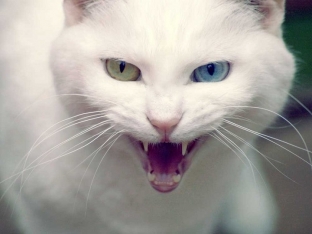Fluffy scratchy pets can carry nasty infectious diseases, one of which is lymphadenopathy, or cat scratch disease. As a rule, this infection does not bring any special problems to a person, manifesting itself only with a rash on the skin and a slight inflammation of the lymph nodes, but sometimes it can have quite serious complications.
Cat-scratch disease (BCS; benign lymphoreticulosis) occurs predominantly in persons who have been in contact with cats (presence of scratches, bites), is manifested by regional lymphadenopathy and is characterized, as a rule, by a benign course and spontaneous recovery.
Routes of transmission of cat scratch disease infection
Cat-scratch disease is caused by B. henselae, formerly known as Rochalimaea henselae. The genus Bartonella includes several pathogens that are pathogenic to humans and are small pleomorphic facultative Gram-positive intracellular microorganisms. Clinical manifestations of cat scratch disease, read more on estet-portal.com. After an infection, persistent lifelong immunity is maintained. Reports of re-infection were almost non-existent.
Cat Scratch Disease Infection Facts:
- The reservoir for B. henselae infection is asymptomatic cats.
- The pathogen is transmitted to cats by fleas.
- Infection of a person occurs when a cat bites or scratches, as well as licking, if the pathogen is in the claws and oral cavity of the animal.
- Kittens under 1 year of age are more likely to be infected, as they are more likely to be infected with B. henselae and scratch more often.
- The chances of getting infected are 27 times higher in people who have been scratched or bitten, and 29 times more likely in people whose pets are infested with fleas.
- A sick person is not a source of infection, and there are no data on transmission of infection to humans from fleas.

Clinical manifestation of cat-scratch disease
The course of cat scratch disease is benign. The disease usually resolves on its own. Symptoms resolve within 2-4 months. In 5-25% of patients, the course of this pathology is complicated by involvement in the process, in addition to regional, distant groups of lymph nodes. For patients over 60 years of age, an atypical course of cat scratch disease is characteristic.
Immunocompromised individuals infected with B. henselae or B. quintana may develop serious forms of CCC such as bacillary angiomatosis, bacillary peliosis, bacteremia.
All patients with CCC indicate recent contact with cats (scratches, bites, licks). 3-10 days after infection, when scratches or bites heal, a primary affect is formed - red-brown papules on the skin with a diameter of 3-5 mm.
After 2-3 days, the papules turn into vesicles or pustules filled with cloudy contents, in place of which small ulcers or crusts subsequently form. Sometimes such pustules dry up without the formation of ulcers.
In addition to papular rashes and regional lymphadenopathy, the following symptoms are characteristic of cat-scratch disease:
- general malaise, weakness (29.4%);
- fever (28%);
- lack of appetite (14.5%);
- headache (13%);
- sore throat (7%);
- arthralgia (2.5%).
When the primary affect, as a rule, is already resolved, regional lymphadenopathy develops, characterized by a gradual significant increase in lymph nodes. Usually their sizes are from 1 to 5 cm, but they can reach 8-10 cm.
More often, lymphadenopathy is represented by lesions of single lymph nodes of moderate density with signs of inflammation - local hyperemia and hyperthermia of the skin.
Lymphadenopathy is usually benign and resolves within 2-4 months, rarely it can last up to 6-12 months. Often, lymph nodes in CCC suppurate with the formation of fistulas, from which pus is released, and therefore there is a need for timely sanitation of the focus. Cat-scratch disease can have an atypical presentation. See our next article for symptoms of atypical presentation of cat scratch disease.






Add a comment